
We’ve curated a list of the best welcome bonus rewards for credit cards.
I remember a time when the best welcome bonuses were 50,000 points. Whether it was miles, points, or some other reward – fifty thousand was the gold standard.
The regular cards offered like twenty or thirty, while the best ones offered fifty.
Nowadays, the best have outdone themselves by offering six-figure bonuses. There’s something magical about getting a 100,000 influx into your account and seeing how much that can get you in hotel stays and flights. Heck, turn it into cash or gift cards and enjoy a staycation.
These are some of the best offers because they are from companies and cards that are useful. These aren’t 100,000 points to some obscure hotel chain or an airline that services a limited market, these are Membership Rewards, Chase Travel, Hilton, and others – you know these names and you visit places where you can save money by using points.
Some of these offers are for a limited time only, so snatch them up and bank the points if you want them. (also peek the perks that come with the card, which often include complimentary status upgrades, travel credits, and more)
🤔 Some of the cards on this list do not have 100,000 points offers right now, but they had them in the past. Credit cards change up offers so we keep them on the list, with updated information, because they might come back.
Table of Contents
- Marriott Bonvoy Bevy™ American Express® Card – 85,000 Marriott Bonvoy points
- Marriott Bonvoy Brilliant® American Express® Card – 185,000 Marriott Bonvoy bonus points
- IHG® Rewards Club Premier Credit Card – Earn 170,000 Bonus Points
- British Airways Visa Signature Card – 85,000 Avios
- The Capital One Venture X Rewards Card – 75,000 miles
- Chase Sapphire Preferred Card – 60,000 Ultimate Rewards points
- Hilton Honors American Express Card – 80,000 Hilton Honors Bonus Points plus a Free Night Reward
- The Business Platinum® Card from American Express – 150,000 Membership Rewards points
- The Hilton Honors American Express Business Card – 130,000 Hilton Honors Bonus points
Marriott Bonvoy Bevy™ American Express® Card – 85,000 Marriott Bonvoy points
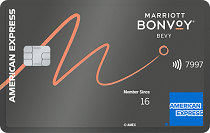
It’s a more affordable version of the card we list below because the annual fee is only $250. The card comes with complimentary Gold Elite Status, which itself comes with a host of great benefits like late checkout (when available) and free in-room wi-fi, as well as the free night award and 15 Elite Night credits.
Marriott Bonvoy Brilliant® American Express® Card – 185,000 Marriott Bonvoy bonus points
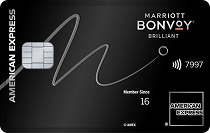
The annual fee may seem steep but it comes with lots of benefits, including $300 in Dining Statement Credits each year and a $100 Marriott Bonvoy Property Credit. You also receive 1 free Night Award every year after the anniversary too, among many other benefits.
This is on top of the point-earning structure of 6X points for each dollar spent at hotels participating in the Marriott Bonvoy(TM) program, 3X points for each dollar spent at Worldwide Restaurants and on flights booked directly from an airline, and 2X points on all other eligible purchases. No foreign transaction fees.
IHG® Rewards Club Premier Credit Card – Earn 170,000 Bonus Points

There’s also a Free Night perk after each account anniversary at an eligible IHG hotel as well as a free reward night when you redeem points for any consecutive stay of 4+ nights. The card gives you 10 points per $1 spent when you stay at an IGH hotel as well as 2 points per $1 spent at gas stations, grocery stores, and restaurants. 1 point per dollar spent elsewhere.
Cardmembers are given Platinum Elite status too as well as a Global Entry or TSA PreCheck fee credit of up to $120 every four years. $99 annual fee.
British Airways Visa Signature Card – 85,000 Avios
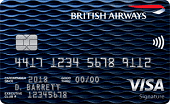
This travel card lets you earn Earn 3 Avios per $1 spent on purchases with British Airways, Aer Lingus, Iberia, and LEVEL. Earn 2 Avios per $1 spent on hotel accommodations when purchased directly with the hotel. Plus earn 1 Avios per $1 spent on all other purchases..
There are no foreign transaction fees and you get a Travel Together Ticket if you spend $30,000 each calendar year. The Travel Together Ticket is good for two years and it lets someone fly with you (they just pay taxes, fees, and carrier charges) when you redeem Avios for a flight on British Airways.
This card has an annual fee of $95 and no foreign transaction fees.
The Capital One Venture X Rewards Card – 75,000 miles
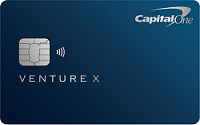
The Capital One Venture X Rewards Card offering a 75,000 miles after you spend $4,000 in purchases within the first 3 months.
On top of the fresh bonus, you can also you earn 2X miles per dollar on all other purchases plus 10X miles per dollar on hotels and rental cars booked through Capital One Travel, 5X miles per dollar on flights and vacation rentals booked through Capital One Travel.
The card has an annual fee of $395 but you also get:
- $200 vacation rental credit in the first year
- $300 annual travel credit when booking through Capital One Travel, plus,
- A $100 credit towards TSA PreCheck and Global Entry’s application fee.
👉 Learn more about the Capital One Venture X Rewards Card
Chase Sapphire Preferred Card – 60,000 Ultimate Rewards points
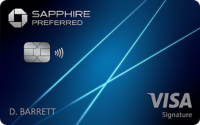
You earn 5x points on travel purchased through Chase Ultimate Rewards, 3x points on dining, select streaming services and online groceries, 2x on all other travel purchases, 1x on everything else (plus a $50 annual Ultimate Rewards Hotel Credit). There are no foreign transaction fees and the annual fee is $95.
👉 Learn more about the Chase Sapphire Preferred Card
Hilton Honors American Express Card – 80,000 Hilton Honors Bonus Points plus a Free Night Reward

The reward structure is a little different than the Hilton Honors Surpass Card:
- 7X Hilton Honors Bonus Points per dollar for each eligible purchase on your Card made directly with a hotel or resort within the Hilton portfolio.
- 5X Hilton Honors Bonus Points for eligible purchases on U.S. supermarkets, U.S. gas stations, and at U.S. restaurants.
- 3X Hilton Honors Bonus Points for all other eligible purchases on your Card.
You get complimentary Hilton Honors Silver status with the card plus you get Gold if you spend $20,000 on eligible purchases in a calendar year. $0 annual fee.
👉 Learn more about the Hilton Honors American Express Card
The Business Platinum® Card from American Express – 150,000 Membership Rewards points
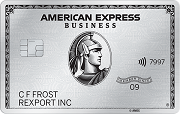
(it’s worth noting that the Business Platinum® Card from American Express is not a typical credit card, it allows you to carry a balance for certain charges but not all)
This card also offers 5X Membership Rewards points on flights and prepaid hotels on amextravel.com as well as 50% more points on Purchases of $5,000 or more and 1X points for each dollar spent on eligible purchases. Cap applies.
This card offers a lot of travel perks:
- You get access to more than 1,300 airport lounges across 140 countries and counting with The American Express Global Lounge Collection(R). More lounge options than any other credit card on the market as of 10/2024. Access is limited to eligible Card Members.
- Up to $199 in statement credit per year for CLEAR® Plus Credit Membership
- Unlock over $1,000 in value per year for statement credits on select purchases, including tech, recruiting and wireless with the Business Platinum Card.
- No foreign transaction fees
- Fee credit for Global Entry or TSA Precheck (every four years, which is when they are renewed)
- $200 Airline Fee Credit: Select one qualifying airline and then receive up to $200 in statement credits per calendar year when incidental fees are charged by the airline to your Card or any of the Additional Cards on your Platinum Card account.
This card has an annual fee of $695.
👉 Learn more about the Business Platinum® Card from American Express
The Hilton Honors American Express Business Card – 130,000 Hilton Honors Bonus points

The rewards structure is a fairly standard 12X directly with hotels and resorts in the Hilton portfolio, 6X at US gas stations, on US purchases for shipping, on wireless telephone services purchased directly from US service providers, on flights booked directly with airlines or with Amex Travel, on car rentals booked directly from select car rental companies, and at US restaurants, 3X on all other eligible purchases
In addition to the bonus, you get complimentary Gold status, a Free Night Reward after you spend $15,000 in purchases in a calendar year (a second Free Night Reward when you spend an additional $45,000), plus 10 free airport lounge visits each year once you enroll in Priority Pass Select (1,000 lounges in over 120 countries).
This card has a $195 annual fee.
👉 Learn more about the Hilton Honors American Express Business Card
So where will you go with your points today? 🙂




Thank you for compiling. I was just in the market for a travel bonus card. We ended up going with the Uber credit card. There isn’t a major sign up bonus, but the cashback rewards are better than any other card or point equivalent I’ve seen. We will sign up for another at some point and I’ll keep this post handy for reference.
I’ve got strong considerations for the BA card. I really like the point pooling for families, however, BA doesn’t fly out of my airport and would have to drive 7 hrs to ORD to take advantage of the companion ticket.
Yeah that would be a bummer, it’s not a benefit if you’ll never use it (and 7 hours is way too far!).
Man I wish we had such lucrative bonuses in Canada!!
I met someone who lived in the US for a while and racked up some major points and flew to Maldives for their honeymoon. And recently took a business class trip to New Zealand with their baby. Awesome…